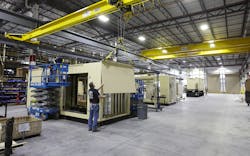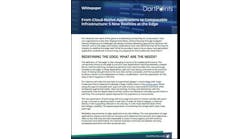Enclosures: The Secret to Making Your Backup Power Solution Work For You
Whereas many aspects of a data center can be standardized, each facility’s site environment is ultimately different. Finding the right backup power solution involves identifying the unique aspects that will affect the package around the generator—things like noise levels, temperature requirements, and space restrictions. For many, the building of a generator into its packaging presents a major weak point in the industry and is the true test of a vendor’s ability to customize.
Finding the right generator vendor, then, must involve the search for a vendor that can provide a complete solution, including enclosure. With design modification flexibility being the most important factor, your requirements could be met in one of two different ways. In the first way, perhaps you have your own internal engineering resources who set the specifications. In these situations, a data center team often has their own ideas around pre-engineered components and a strong idea of preferred modularization and phasing that you bring to the generator vendor. In the second way, maybe your team doesn’t have any particular knowledge around how exactly your generator enclosure should be customized. In these circumstances, a data center team will work closely with their vendor to develop specifications to meet all site constraints within the enclosure customization process.
Working with a vendor who can engineer and manufacture your custom enclosure in-house presents a huge advantage. This type of control means your backup power solution will be delivered as a complete end-to-end solution. The entire process – assisting with design at the front end all the way through to controlling the fabrication process and supporting the product when in an operational environment in the field – is managed by one party all the way through its lifecycle.
A vendor that builds its own generator enclosures is important for another reason, too. By expanding their manufacturing space and capabilities to include the range and volume necessary, they show a commitment to providing the best solution possible. By demonstrating an investment in providing an optimal product, it’s a message to you that they take their role seriously.
If the packaging will come from a third party, make sure you do your homework to know the full background on how the component supplier works with your vendor. If your vendor owns the intellectual property then the component supplier can be managed similarly to an in-house team, where design details can still be engineered into your solution. This type of relationship produces more customization, easier installation, and assured quality control.
In brief, when it comes to selecting a backup power solution for your data center, choosing the right generator enclosure is a crucial factor that should not be overlooked. Your unique site requires customization of the enclosure to address several important factors, so finding a vendor that can provide a complete solution, including packaging, is essential.
Ian Wilcoxson is Kohler Power Systems Data Centre Channel Manager - EMEA. Contact Kohler to learn more about their data center solutions.






